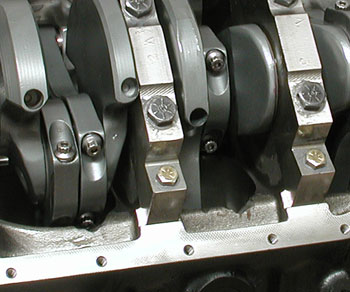For more than 50 years the old saying “There’s no substitute for cubic inches” has been the credo of nearly every racer and hot rodder. Whoever created this unwritten universal law could never have imagined to what extremes today’s speed enthusiasts would take it.
Now, unless you have a 420cid-plus small-block or a 550cid-plus big-block under your hood, you’re not really in the game. And the only way to get these large displacement numbers is to “stroke it.” These big-inch engines are big business too. They’ve become a dominant part of the performance scene, and your customers are tuned in and looking for an engine builder to fulfill their expectations. The question is, are you interested in joining ranks with the “bigger is badder” bonanza?
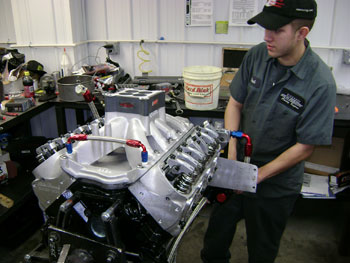 Stroker Motors 101
Stroker Motors 101
Stroker motors are nothing new – engine builders have been putting them together ever since they started hot rodding V8 Ford flatheads. In those days, and even today, one of the more popular ways to stroke an engine was to swap a crankshaft out of another engine with a larger stroke.
Another popular stroking technique for engines with large rod journals is to offset grind the crank throw to a smaller diameter, increasing the stroke and allowing you to use a smaller journal rod from another engine. Early aftermarket stroker cranks were actually made by welding up the rod journals and regrinding with a longer stroke then hard chroming them for durability. No matter how it was accomplished, the result was always the same – more torque and better acceleration!
A lot has changed over the past few years with the introduction of inexpensive off-shore cast and forged cranks, and ultra-modern machining centers that can spit out a crank from a solid piece of billet in a fraction of the time it took 10 years ago. These changes have made stroker kits affordable for the masses, even for everyday street engines. A host of aftermarket cylinder blocks designed specifically for large stroke cranks and larger bores have put 700 cubic inches within reach if you feel the need.
The effect that a longer stroke has on an engine is important to understand. It affects piston speed, piston acceleration and the amount of leverage the piston and rod exert to rotate the crank. Think about how much you can tighten a fastener with a 12” breaker bar versus a 6” ratchet. The same holds true for a stroker crankshaft – a 5” stroke will exert twice as much torque on a crank as a 2.5” stroke crank, everything else being equal.
Unfortunately, everything else is never equal – overall piston speed increases, piston acceleration away from TDC (top dead center) and BDC (bottom dead enter) also increases, so there are some compromises that diminish the overall gain when you increase the stroke.
Big stroker engines have several other advantages too. They can produce more performance than smaller engines without breaking a sweat. Moderate compression ratios and mild cams allow professional bracket racers to race all year long with little maintenance to their engines.
Another reason that large displacement engines are rising in popularity is the declining quality of pump gas. As the octane at the gas pump declines, big engines with lower compression ratios work better than their high compression small-block counterparts.
Big engines are more forgiving too – select a slightly wrong camshaft or intake manifold and your customer will hardly notice. This gives you a big edge in customer satisfaction.
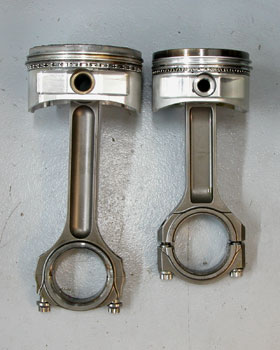 Did You Know…
Did You Know…
Even when limited by rules to a specified engine displacement, changes in crankshaft stroke can be a benefit. A good example is the NASCAR restrictor plate engines required for super speedways. These engines run different strokes than “unlimited” short track engines. When you think about it, it makes good sense – with the smaller carburetor inlet used in restrictor races, a longer intake stroke is needed to allow time for complete cylinder filling.
Size Matters
If you look at current OE crate motor programs, like the very successful $14,000 GM ZZ 572cid big-block or the 540cid Mopar Hemi, you’ve got to think that the sky is the limit for what consumers are buying. Currently, there are several 632cid Chevy rotating assemblies in the aftermarket and even a 655cid Mopar Wedge. There was a day when a 454 was a fairly good-sized big-block.
Now, 454cid is a very popular small-block Chevy engine combination, and they make more than 600 ft.lbs. of torque and more than 600 horsepower in pretty mild form.
So how do you build a 454 small-block or a 632 big-block? These really big engines require a stroker crankshaft plus a big-bore aftermarket block. However, there are several successful intermediate stroker motor combinations like the 347-357 small-block Ford that makes huge power and simply requires a good OE block and a stroker crank rotating assembly. It’s simply a matter of searching around to see what’s out there.
The popular combinations that work well have commercially defined themselves, and stroker assemblies for less popular engines such as FE and M model Fords, big-block Buick and Oldsmobiles and even 4.0L Jeep sixes are available. You just need to figure out who your customer base is and adapt a stroker program to fit.
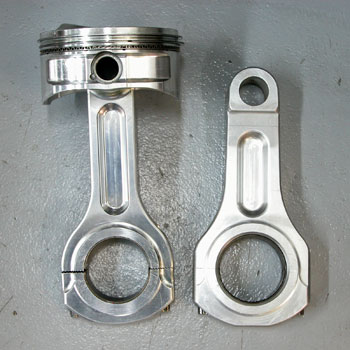 SHOW ME THE MONEY
SHOW ME THE MONEY
Why do custom stroker engines make sense for the average engine shop? The most important reason why some shops sell stroker engines is that they are no more difficult to build than the average performance rebuild.
The days of ordering a bunch of custom parts, then figuring out if everything will fit together are over. Several companies have already done the heavy lifting for you.
All you have to do is pick up the phone and order a block and rotating assembly that fit your customer’s power requirements and budget. Or, if you have the facility and capability, you can prep your customer’s existing block or core for a new rotating assembly. You just can’t get as wild with the displacement with an OE block.
The top few performance shops specializing in large displacement stroker engines are selling 750 to 1,000+ complete engines per year, with prices starting around $10,000 and topping out near $25,000. If you do the math, you will discover that there’s real money to be made here! If you are tired of the thin margins from slamming together $650 small-block Chevys, read on.
So what’s in it for you? We spoke to several large stroker engine/kit suppliers and they stated that the engine shops can only expect about a 10 percent discount from their published “racer” prices to the public, and that depends somewhat on the volume of business you do. However, these published prices for rotating assemblies are usually less expensive than the average jobber can purchase them.
The margins are pretty decent though – take the popular 632cid big-block Chevy we’ve mentioned earlier. One of the bigger suppliers sells the assembled short block for about $6,000. However, you can buy the same bare block for about $2,100 and the rotating assembly for $1,800. That leaves the engine shop about $2,000 for simply assembling the shortblock, plus they get to sell the camshaft and cam drive assembly, and engine top end components.
Of course, there’s nothing keeping a shop from buying the assembled unit, putting their tweaks on it and marking it up. Instead of having money tied up in a two-to-four-week time-consuming engine build, a performance shop might be able to turn a profit in a week.
Talking To the Pros
We spoke to several pro engine builders who specialize in stroker engines, from block manufacturers like Bill Mitchell at World Products and crate motor builders like Bobby Cross at Reher-Morrison Racing Engines, to individual custom engine builders Pat Musi at Pat Musi Racing Engines and Kenny Duttweiler at Duttweiler Performance. They all serve different aspects of this big-engine market – but they all agree that it has never been easier for the engine builder and customer to both get what they want.
Aftermarket Blocks
Most of our pro builders started the conversation talking about the engine block. When you increase stroke and bore, the crankshaft requires a lot more (bigger) counterweight to balance the rotating assembly. That can be accomplished in several ways: physically larger counterweights, or stuffing smaller counterweights with expensive Mallory metal which is okay for exotic race engines, but not practical for your average engine build. Another option is to externally balance the crankshaft with a special crank flange and harmonic damper.
Our panel of experts agreed that for most stroker engines an aftermarket block is an essential part of the equation – here’s why. Mitchell (who has a vested interested in promoting his aftermarket blocks) put it this way, “The first thing we do when designing an aftermarket block is decide how much room we need in the crankcase area for a stroker crank.
"The skirt and pan rails are moved and the cam is raised if needed. And for those concerned with maintaining a good rod-to-stroke ratio, the decks are raised on some models to accommodate a longer rod. Plus, we put a lot of extra material in the cylinder walls, so the bore can be increased as well. It’s stupid to increase the stroke without increasing the bore if you can.”
Bobby Cross echoed Mitchell’s logic. “The worst thing you can do is start with an old block you have lying around the garage. You’ll end up spending more money in the long run and end up with an inferior engine. With an aftermarket block you have more options concerning rod ratio, and here at Reher Morrison we also prescribe to the big-bore theory.”
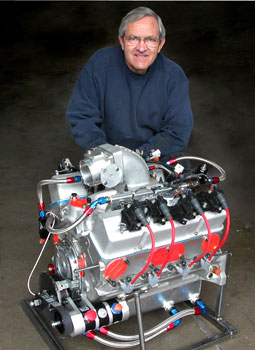 Mitchell, in his usual direct manner, summed up the block issue by saying “It takes a custom engine shop at least $250-$300K of machinery to correctly prep a block and rotating assembly, but all it takes to assemble a shortblock are a few hand tools, a torque wrench and some measuring equipment.”
Mitchell, in his usual direct manner, summed up the block issue by saying “It takes a custom engine shop at least $250-$300K of machinery to correctly prep a block and rotating assembly, but all it takes to assemble a shortblock are a few hand tools, a torque wrench and some measuring equipment.”
Pat Musi, a long-time East Coast engine builder and racer, specializes in 555cid big-block Chevys for everything from street cars to hardcore drag racers weighed in on the short- versus tall-deck aftermarket blocks this way. “Ideally, in a race engine you’d like to have a 1.8 rod ratio. A stock 427 Chevy is 1.6. With the 4.25” stroke crank that we use in our 555s, the rod ratio is around 1.55. We just live with that instead of going with a tall-deck block because I prefer to keep the rotating mass low, and I want to take the flex out of the valvetrain.”
Pistons
Some other advice from the pros concerns the rotating assembly. Whenever you increase an engine’s stroke and rod length to compensate for rod ratio, you end up with a very small compression height on the piston (the area between the piston pin and the top of the piston). What this does is limit the area where you can place the rings.
The rule of thumb here is to keep the piston pin below the rings for most general applications.
Kenny Duttweiler who always has the race/max horsepower point of view stated, “I always like the pin as high in the piston as possible. Heck, the ideal place would probably be above the piston if that were possible. A high pin location adds to piston stability and reduces thrust on the piston skirt.”
Stroker piston skirts are usually shorter than traditional pistons to provide crankshaft counterweight clearance at BDC. This results in higher skirt and bore loading, but advances in piston design and the thicker aftermarket block bores make this a non-issue.
